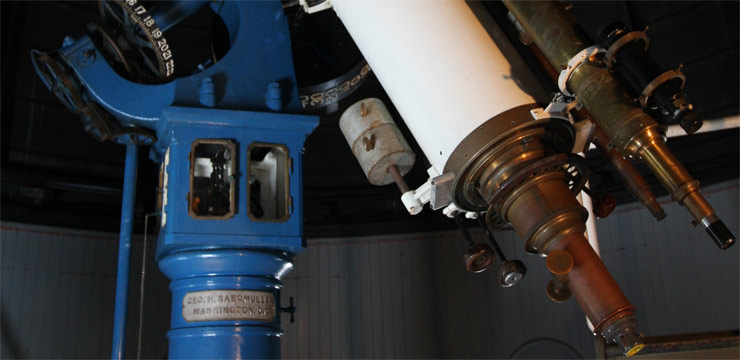Northeast Planetary Data Center
August 2002 :
There are certain areas on the Brown campus where you can get the feeling of having stepped back in time. I experience that feeling when I step through Soldiers' Arch off Thayer Street to Lincoln Green (which is near the Main Green). You can't escape the telltale signs of a modern society (traffic, airplanes overhead, phone kiosks, etc), but I think it's the architecture here that takes me back to earlier days.
One of those older structures is the Lincoln Field Building. Climb to room 216 on the second floor and you're suddenly thrust into a treasure trove of science and technology. There is no better resource in New England for information on the many NASA missions. Want to research a science fair project? You could not only get a few ideas here, but also get access to the wealth of information contained in the vast reference library.
When I visit this facility I'm like a young kid in a toy or candy store. I could spend weeks here just perusing all the images returned by interplanetary spacecraft through the years (like the Pioneers, the Voyagers, Viking, Mars Global Surveyor, and Magellan, just to name but a few!!). All this data is available utilizing a variety of computers, photographic prints and slides, DVD, CD-ROM, etc.
Tours of this fascinating facility can be arranged for groups or individuals by calling the Data Manager at 401-863-3243. Depending upon availability of personnel you might even arrange a lecture by one of the professors or graduate students who work on some of NASA's missions. Skyscrapers, the Amateur Astronomical Society of Rhode Island, has held its monthly meetings at the Center from time to time, and I can tell you a visit here is something you won't soon forget.
We all realize how complex NASA missions are, and how much knowledge has been obtained from space exploration. Well, the mission statement of The Planetary Data Center is simple: "The purpose of these facilities is to make available to interested researchers, educators, and the general public the vast amount of image data obtained by the U.S. Space Program." In the mind of this space enthusiast, the Center exceeds its objectives. Check it out sometime.
If poor weather won't permit you to "keep your eyes to the skies," then in Part II we'll check out the skies at the Cormack Planetarium. Clouds never spoil the view there!!
Related Topics




